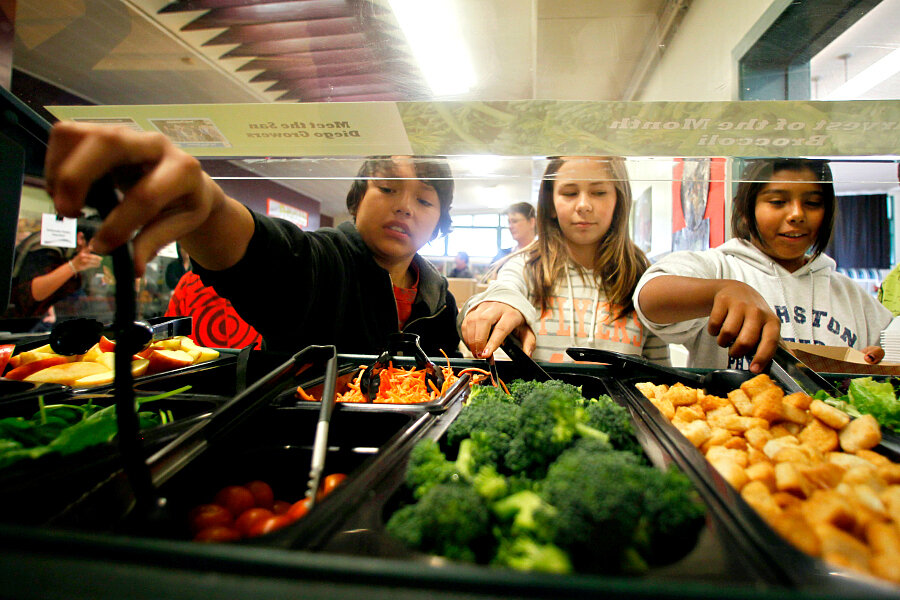'Cafeteria Man' champions fresh foods in schools
As Food and Nutrition Director of Baltimore City Public Schools, Tony Geraci set out to replace pre-plated, frozen school lunches with fresh, local produce, transforming students’ understanding of their meals and the plants behind them.
The film “Cafeteria Man” is the story of Geraci’s mission to give students the power to change what’s wrong with our nation’s school lunches.
In Baltimore schools, students lived off a diet of frozen pizza and pre-packaged, processed meats, canned fruits, and dehydrated veggies. Kids are shown shouting, “Mystery meat again?” as they file into the school cafeteria for lunch.
Enter the Cafeteria Man.
“In one generation, fruit has become a flavor, not a food,” Geraci says regretfully.
Juice boxes labeled “two servings of fruit!” and cans of juice printed with glossy images of fruits and vegetables make it easy for young students to confuse the flavor of fruit with fruit itself. Thus, the Cafeteria Man’s first order of business was to get some real fruit—not concentrated juices or watered-down smoothies—into cafeterias. He chose to introduce students to local, Maryland-grown peaches.
“Those peaches were fresh,” a student recalls. “Like fresh from a tree.”
Already the produce had students thinking about where their food came from—not from the store, but from the land. Geraci wanted to make students’ connection between food and land even stronger.
Great Kids Farm, a 33-acre plot of land (previously home to a city-owned nature center) became an outdoor classroom for Baltimore students, a place they could smell, taste, and touch food plants they had never seen before. They learn how to compost and why. They pull weeds from vegetable gardens and water plants in one of the farm's three greenhouses.
“The single most powerful tool you can use to teach a kid about food is to plant a seed,” Geraci says, “and watch that child watch that seed grow into a fruit or a vegetable that they harvest.”
Geraci focused on exposing young students to fresh fruits and vegetables and getting them to try new foods. He did away with “mystery meat,” which students were previously served more than once a week and called “nasty.” In its place: Meatless Monday, a day for students to explore vegetarian options.
With older students, Geraci faced bigger barriers to student involvement and needed to find a way to invoke enthusiasm for food in low-income high school students. What better way to do so than give them opportunities they’ve never had before?
Geraci started a summer hospitality program where students don their very own chef’s whites and learn from local restaurateurs how to prepare and cook fresh meat and seafood. The student-run restaurants also serve Great Kids Farm produce.
And the hospitality program shows students they are important.
“Most of us grew up without a father,” a student in the program says, “some of us grew up without a mother and a father. It’s giving us our own voice.”
The film also documents Geraci’s efforts to empower students to influence our nation’s leaders. In 2009, he took five Baltimore students to Washington, D.C., to testify about the urgency of school nutrition reform in front of a congressional committee.
In the committee meeting, Alice, a Cafeteria Girl, spoke confidently into the microphone, telling the committee members, “The same kids who are already struggling to eat good food at home are getting inferior meals at school. The city could spend its money better on healthier, tastier foods, rather than on pre-packaged junk.”
Alice’s words ring true for many cities, and she is hopeful about the leadership role Geraci has entrusted to her and her peers.
“What kids can do is surprising,” she says.
• Abigail Woughter is a senior studying agricultural sciences at Cornell University.
• This article originally appeared at Food Tank, a think tank focused on feeding the world better. Food Tank researches and highlights environmentally, socially, and economically sustainable ways of alleviating hunger, obesity, and poverty and creates networks of people, organizations, and content to push for food system change.






